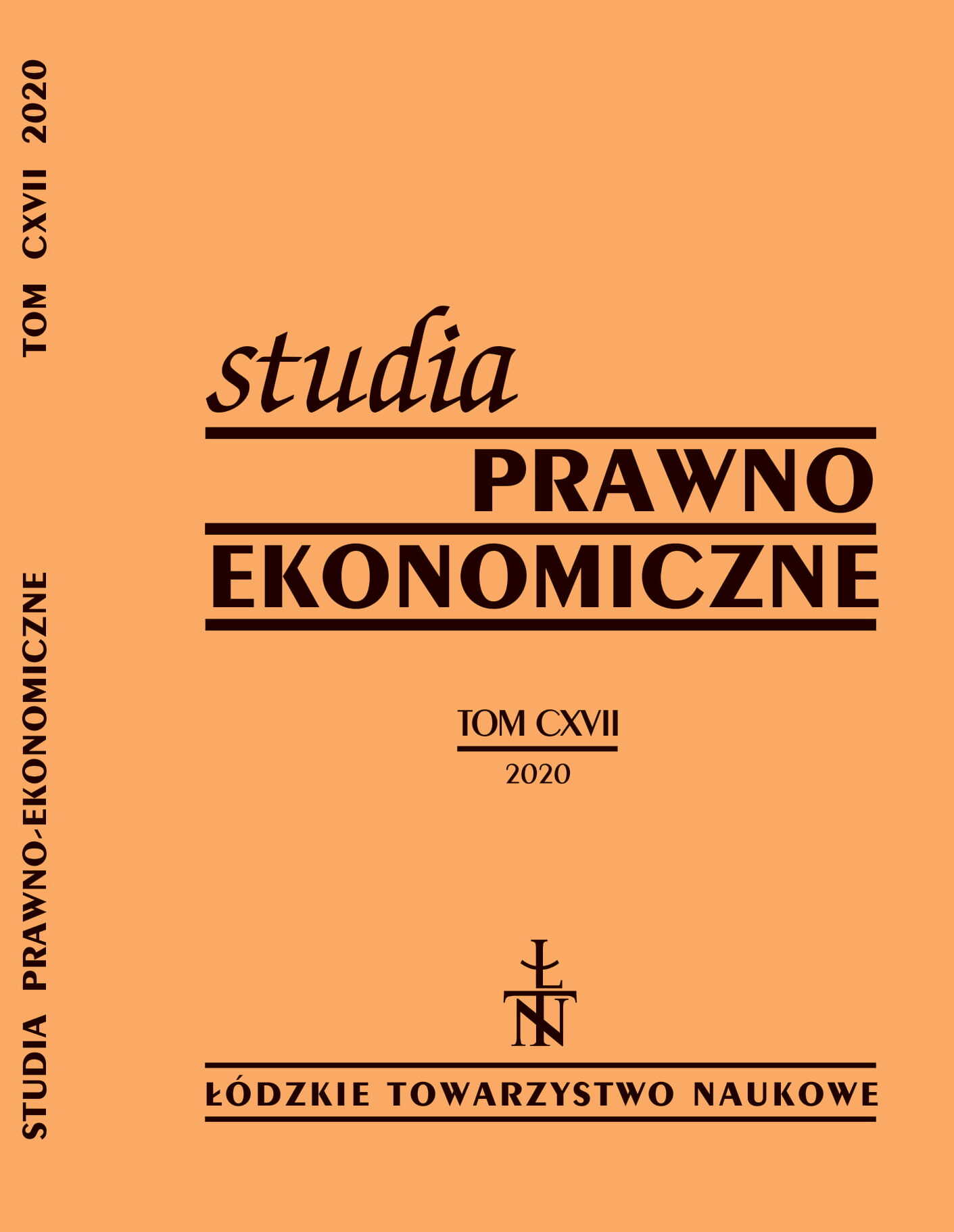Changes in foreign trade of the Baltic countries after accession to the EU
DOI:
https://doi.org/10.26485/SPE/2020/117/13Keywords:
foreign trade, economic integration, Baltic countriesAbstract
Background: Foreign trade is the area in which the effects of the Baltic countries’ (Lithuania, Latvia and Estonia) accession to the European Union manifested themselves relatively quickly. Basically, the liberalization of trade with the Member States and the adoption of the principles of a common trade policy with third party countries resulted in the changing of the terms of trade with all countries from. These changes, according to integration theory, should result in the creation of as well as the shifting of trade streams.
Research purpose: The purpose of the analysis in this article is to demonstrate that the indicated changes resulting from economic integration were factors that influenced the size and structure of foreign trade in the Baltic States.
Methods: The total commodity turnover and its division into product types according to the SITC classification were analyzed. Attention was particularly focused on the share of intra-Community trade to overall trade, as well as changes in the exchange of goods between the Baltic countries and the rest of the world. The research period covers the years 2005–2018, and the data for the calculations was taken from the Eurostat database.
Conclusions: The study reveals that the effect of creating trade was more visible before the accession of the Baltic countries to the integration group than after. There was also a shift of trade towards non-Community trade, while internal trade shifted towards new member states.
Downloads
References
Balassa B., The Theory of Economic Integration, George Allen & Urwin LTD, London 1961.
Barcz J., Kawecka-Wyżykowska E., Michałowska-Gorywoda K., Integracja europejska w okresie przemian. Aspekty ekonomiczne, PWE, Warszawa 2016.
Bożyk P., Misala J., Puławski M., Międzynarodowe stosunki ekonomiczne, PWE, Warszawa 2002.
Budnikowski A., Międzynarodowe stosunki gospodarcze, PWE, Warszawa 2006.
Eurostat, Trade in goods by top 5 partners in 2018, https://ec.europa.eu/eurostat/cache/info¬graphs/trade/trade_2018/; stan na 6.01.2020 r.
Eurostat, International trade of EU, the euro area and the Member States by SITC product group, ext_lt_intertrd; stan na 15.01.2020 r.
Grynia A., Międzynarodowa konkurencyjność gospodarki Litwy po przystąpieniu do Unii Euro¬pejskiej, Wydawnictwo Uniwersytetu Gdańskiego, Gdańsk 2018.
Kabat D., Rudnicki Z., Integracja międzynarodowa: problemy konceptualizacji i definicji, Ze¬szyty Naukowe, nr 795, Uniwersytet Ekonomiczny w Krakowie, Kraków 2009, s. 57–100.
Kawecka-Wyżykowska E., Preferencyjne porozumienia handlowe: ułatwienie czy bariera dla wielostronnego systemu handlowego WTO oraz handlu międzynarodowego?, Referat przy¬gotowany na konferencję w czerwcu 2013 r., www.kawecka.eu/files/Preferencyjne_porozu¬mienia_handlowe-2013.pdf; stan na 5.01.2020 r.
Ładyka S., Teoretyczne aspekty korzyści z międzynarodowej regionalnej integracji gospodarczej, Wydawnictwo SGH, Warszawa 2001.
Mucha-Leszko B., Korzyści międzynarodowej integracji gospodarczej a osiągnięcia i problemy Unii Europejskiej, w: W. Bieńkowski, S.I. Bukowski, G. Olszewska (red.), Przyszłość in¬tegracji europejskiej – konkurencyjność i rynki, Wydawnictwo CeDeWu, Warszawa 2012, s. 15–42.
Pluciński E.M., Konkurencyjność strukturalno-czynnikowa polskiego handlu na rynku UE w la¬tach 2002–2012, Oficyna Wydawnicza AFM, Kraków 2015.
Świerkocki J., Zarys ekonomii międzynarodowej, PWE, Warszawa 2011.
Viner J., The Customs Union Issue, Published The Carnegie Endowment for International Peace, New York 1950.
World Trade Report 2013, WTO, Geneva, https://www.wto.org/english/res_e/publications_e/ wtr13_e.htm; stan na 12.01.2020 r.
Wysokińska Z., Witkowska J., Integracja europejska: rozwój rynków, Wydawnictwo Naukowe PWN, Warszawa 2001.
Zielińska-Głębocka A., Wprowadzenie do ekonomii międzynarodowej – teoria handlu i polityki handlowej, Wydawnictwo Uniwersytetu Gdańskiego, Gdańsk 1997.



